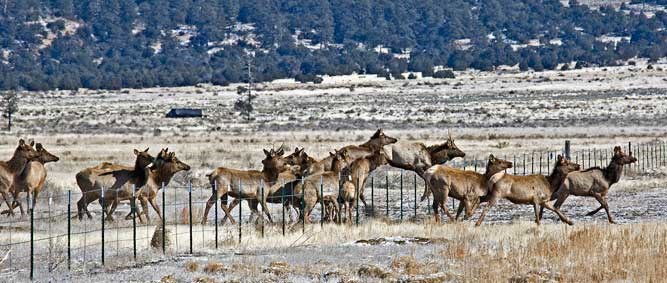
There is a critical need to develop connectivity maps for a broad array of Oregon’s terrestrial wildlife species. Many species rely on the ability to move throughout the landscape to fulfill their daily and seasonal needs for access to food, shelter, and opportunities to reproduce. Human changes to the landscape often restrict the ability of wildlife to move by adding barriers, inducing changes in their behavior, impacting critical migration stopover sites, and increasing habitat fragmentation.
Mapping and maintaining movement corridors helps maintain population connectivity and biodiversity, aiding in the restoration of at-risk species. Providing and conserving habitat connectivity is also a key management strategy to preserve species and ecosystem processes under a changing climate. To date, efforts to map connected habitat corridors in Oregon have primarily been based on expert opinion that insufficiently supports decision-making regarding species’ mobility and habitat connectivity needs.
In 2016, a diverse group of stakeholders convened the Oregon Habitat Connectivity Consortium (OHCC), a group formed to promote functional natural landscape connectivity and to mitigate barriers to wildlife movement at multiple scales throughout Oregon and the surrounding region. Members of the OHCC include ODFW, Portland State University, ODOT, USFWS, USFS, BLM, The Nature Conservancy, Oregon Wildlife Foundation, Defenders of Wildlife, Burns Paiute Tribe, and Samara Group. The OHCC, led by ODFW, developed an implementation plan for how best to assess and map habitat connectivity for terrestrial wildlife throughout Oregon.
The implementation plan guided the execution of the Oregon Connectivity Assessment and Mapping Project (OCAMP), which began in 2019 and was completed in 2022. OCAMP was a multi-year, collaborative effort to analyze and map statewide terrestrial wildlife habitat connectivity at fine resolutions for 54 species. OCAMP aims to link landscapes for wildlife by identifying current wildlife habitat connectivity throughout the state for a wide diversity of species, representing a variety of taxa, movement types, dispersal capabilities, and sensitivity to anthropogenic threats. These species’ connectivity models were complied to highlight Priority Wildlife Connectivity Areas for all species in Oregon. The maps and models produced for OCAMP will aid in statewide planning and prioritization efforts to maintain functional habitat connectivity; help direct on-the-ground efforts for acquisition, restoration, and conservation of habitat for fish and wildlife; inform long-term planning documents for managed lands; guide granting efforts; inform land use development, including expansion of urban growth boundaries, permitting for renewable energy development, and development of sensitive habitats; and aid in mitigating transportation issues, such as identifying areas where wildlife passage structures could best reduce wildlife-vehicle collisions.
To learn more, click here!